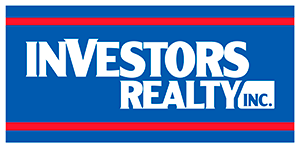By Terry Atkins, PE, LEED AP and John Coolidge, PE, LEED AP, Lamp Rynearson & Associates
The business climate for development may be sunny, but watch out for clouds — they could be packed full of unexpected fees. You may be unaware of additional charges stacking up these days, but it’s worth taking the time to know what a developer may be facing regarding fees, permits and requirements at local and federal levels. Commercial development project costs have increased in part due to construction costs and in part due to the rise in soft costs and are impacting decisions to “go” on projects. A developer or buyer needs to have the total picture before a decision is made to go. A complete cost analysis should include the following, as fees are associated with:
Arterial Street Improvements Plan (ASIP)
ASIP fees are designated for improvements to high-capacity urban roads that deliver traffic from collector roads to freeways or expressways. ASIP fees are standard for most of the Omaha Metro, although vary by jurisdiction The City of Omaha has proposed a recent increase in these fees (38% for 2015 and 3% annually after) and has identified West Maple, 168th Street and 180th Street as targets for improvements.
Watershed Management
Watershed management practices required by the Clean Water Act are put into place to protect and improve the quality of the water and other natural resources within a watershed. Yes, fees are associated with implementing and managing stormwater and the associated forms and paperwork. Also plan for ongoing fees associated with approval and inspection of the required stormwater management systems used to meet Stormwater Pollution Prevention Plan (SWPP) requirements.
Interceptor Sewer
Developments produce sanitary sewer flow, and the increase in flow impacts the regional sewer lines known as interceptor sewers. Interceptor sewers receive flow from multiple trunk sewers. In order to accommodate growth, improvements to existing interceptor sewers and expansion of existing interceptors are required. The City of Omaha uses the location of sewers to define the Present Development Zone, which identifies areas with services to allow for new development.
Administration Fees
These fees are for added workload by local municipal or county employees for review of the proposed new construction. For public improvements, the costs generally run at approximately one percent of the estimated cost of construction. The costs for building permit reviews can vary widely.
Park Fees
With community incomes shrinking, fees to improve and maintain parks are being added to development.
Trail and Boulevard Fees
Fees for trails (connectors, new) and boulevards have become standard.
The fees listed above are standard for the City of Omaha and are generally applicable to most other governmental jurisdictions within the metro area. Sometimes the fees do not seem to be in proportion with the scale of the project. On a recent apartment development project in the area, the cost of the review was based on the percentage of the project’s value vs. a flat fee. The associated review fee was greater than the engineer’s fees to design the project! We recommend that you meet early and often with your local regulatory agency to review which fees may be in store for your project.
Commercial charges aren’t the only ones increasing. Residential development costs have escalated, too. The days of the $10,000 special assessment cost associated with the public improvements for a typical quarter-acre residential lot are a thing of the past in the Metro area. Lamp Rynearson has seen a steady rise in these costs, with $15,000-$20,000 being the new average. These increased costs are a combination of rising construction costs, additional fees, and required additional improvements to adjacent roads, parks and trails.
New legislation may be underway that affects the Corps of Engineers (COE) and other federal entities. Other possible changes in regulatory agency oversight could increase the fees and approvals associated with:
- Floodplain development permits
- Federal Emergency Management Agency (FEMA) applications
- Zoning requirements
- Enhanced design criteria, as outlined by Omaha by Design or other entities
- Public improvements to adjacent streets, such as the addition of new signals or turn lanes
- Traffic studies
Don’t count on costs being the same from one project to the next. Alterations to existing requirements are being made continually. Make sure you have a savvy engineering professional in your corner ferreting out what is needed on your project to save money and headaches later.
This article appeared in our quarterly newsletter from September of 2015. The full newsletter is available at http://files.investorsomaha.com/download/online_newsletter_9-2015.pdf

